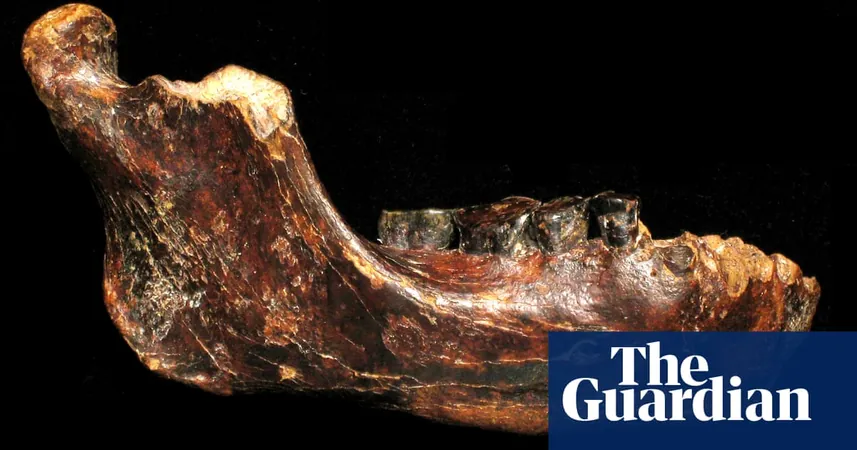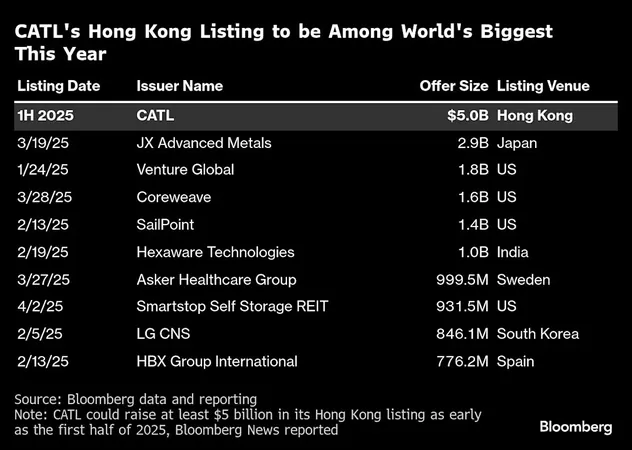
The Untold Story of Apple’s 7,000 Crushed Lisa Computers: A Tech Tragedy
2025-04-07
Author: Yan
In a jaw-dropping twist that obliterated a crucial part of its heritage, Apple made a mind-boggling decision in 1989: the complete destruction of 7,000 Apple Lisa computers. This unusual chapter in tech history, which played out in Logan, Utah, raises numerous questions about why the tech giant would go to such radical lengths to eradicate its past. Once hailed as a revolutionary innovation, the Apple Lisa transformed into one of Apple's most notorious failures, never getting a chance to reclaim its glory.
The Rise and Fall of the Apple Lisa
Debuting in 1983, the Apple Lisa broke ground with features that were years ahead of its time. It was one of the first personal computers to incorporate a graphical user interface (GUI), along with a mouse and windows-based navigation—functions we now consider standard in modern computing.
Despite its pioneering technology, the Lisa faced insurmountable challenges: a staggering price of nearly $10,000 (approximately $30,000 in today’s currency) kept it out of reach for most consumers, compounded by hardware issues that often caused the machines to overheat. The situation dramatically shifted after the launch of the Macintosh, a more user-friendly and economical alternative, which quickly eclipsed the Lisa. By 1985, the Lisa was officially discontinued, but thousands of unsold units awaited an uncertain fate.
Bob Cook: The Man Behind the Revival Attempt
Enter Bob Cook, an audacious entrepreneur and founder of Sun Remarketing, who spotted a silver lining in the discarded Lisa computers. Cook had a penchant for rescuing unsold Apple products and immediately recognized a lucrative opportunity with the neglected Lisa units.
In 1986, he partnered with Apple to procure as many as 7,000 unsold Lisa computers. Cook’s ambition revolved around refurbishing these machines, enhancing their components, and pricing them to attract a broader audience. He poured an impressive $200,000 into research and development to refine the hardware and software.
His hard work bore fruit with the introduction of the Lisa Professional, a rebranded version of the original machine. As he began selling these revitalized Lisas, it seemed as if these forgotten computers were finally on the path to redemption. However, an unexpected turn lay just around the corner.
Apple’s Stunning Decision to Annihilate the Lisas
In September 1989, Apple delivered a bombshell: it demanded the immediate return of all Lisa units still in circulation. Bob Cook complied, yet the shocking twist was yet to come. A truck soon arrived at Sun Remarketing’s warehouse, tasked with loading the computers and delivering them to a landfill in Logan, Utah.
There, these historic machines were mercilessly crushed and buried, forever lost to time. Apple never provided a public justification for this dramatic action, leaving room for rampant speculation about their motives.
Some theorize that the company wanted to safeguard its brand image and prevent refurbished second-hand Lisas from flooding the market. Others suggest that Steve Jobs, known for his tumultuous relationship with the Lisa project, may have wanted to eliminate any remnants of the venture from the company's history. This episode raises significant questions, particularly in light of Apple's current commitment to environmental sustainability.
From Destruction to Sustainability: The Current Paradigm
In stark contrast to its past decisions, today Apple champions its dedication to being a sustainable enterprise, promoting products that are carbon neutral and utilizing materials sourced from 100% recycled aluminum. Many fans and critics alike are left to ponder the irony of a company that once destroyed a piece of its legacy now striving to lead the tech world in ecological responsibility.
The crushing of the 7,000 Apple Lisa computers remains a haunting reminder of the complexities within the tech industry—a tragic tale of innovation stifled by market realities and corporate decisions. As Apple continues to evolve, the bitter irony of dismissing its groundbreaking history underscores the importance of reflecting on the lessons of the past to shape a better future for technology.




 Brasil (PT)
Brasil (PT)
 Canada (EN)
Canada (EN)
 Chile (ES)
Chile (ES)
 Česko (CS)
Česko (CS)
 대한민국 (KO)
대한민국 (KO)
 España (ES)
España (ES)
 France (FR)
France (FR)
 Hong Kong (EN)
Hong Kong (EN)
 Italia (IT)
Italia (IT)
 日本 (JA)
日本 (JA)
 Magyarország (HU)
Magyarország (HU)
 Norge (NO)
Norge (NO)
 Polska (PL)
Polska (PL)
 Schweiz (DE)
Schweiz (DE)
 Singapore (EN)
Singapore (EN)
 Sverige (SV)
Sverige (SV)
 Suomi (FI)
Suomi (FI)
 Türkiye (TR)
Türkiye (TR)
 الإمارات العربية المتحدة (AR)
الإمارات العربية المتحدة (AR)